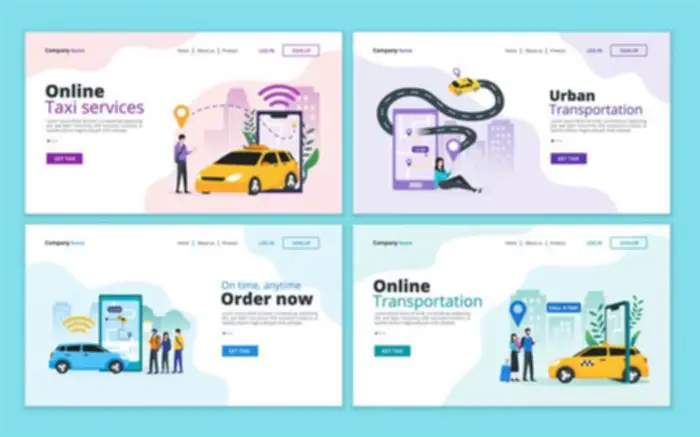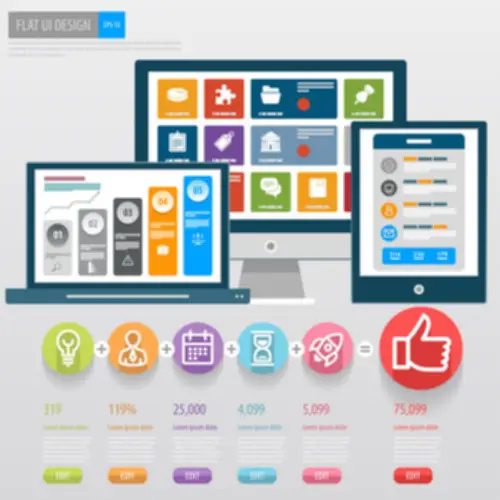Iteration In Ux: Improve Iterative Improvement In Ux Design
It allows developers to regulate to altering requirements and incorporate suggestions early and sometimes, resulting in a more sturdy and user-centered ultimate product. In the waterfall mannequin https://www.globalcloudteam.com/, you and your staff will define project phases earlier than the project begins. Requirements and assets will sometimes be locked before a project begins, and the group avoids changing the project plan as a lot as potential. Iterative processes are a elementary part of lean methodologies and Agile project management—but these processes could be carried out by any staff, not simply Agile ones. During the iterative course of, you will frequently enhance your design, product, or project until you and your group are satisfied with the final project deliverable.
Iterative Course Of Disadvantages
With the UX design phases usually overlapping, it could be helpful iterative development model to lean into the iterative improvement course of and take advantage of the repetitive nature of the methodology. This methodology might help your UX design group create end-products extra efficiently, but more importantly, that meet or exceed the user’s expectations and desires. And the bottom line is that account – you need good UX to maintain your customers. Dive deeper into iterative improvement and the method it helps the UX design process. The improvement team can begin by making a minimal viable product (MVP) with important features after which release it to collect person suggestions. Based on the feedback, subsequent iterations can add new options, improve performance, improve person experience and address any issues or bugs.
How Successfully Will It Assist Your Ux Design?
That design is then revisited and fine-tuned multiple instances by the designer and project owner till the very best version is achieved. Once criteria are evaluated and planning is complete, developers translate the design into code. Engineers integrate the code right into a working system that would be the first iteration of the product. The time required for this part will depend upon the complexity of the design and total scope. While iterative improvement prioritizes flexibility and versatility, the process wants structure to maintain costs low and keep issues on monitor. These are the everyday steps involved in any iterative growth project.
You Should Share A Standard Imaginative And Prescient With The Team
The improvement is done in a targeted and iterative manner, guaranteeing that every increment is implemented, tested and built-in with the prevailing system. Incremental improvement is commonly used in numerous situations where flexibility, adaptability and early supply of worth are prioritized. When the requirements for a software program project usually are not absolutely known or are subject to frequent adjustments, incremental growth allows for flexibility in accommodating evolving needs. However, it’s not as useful in conditions where requirements are well-defined and stable, there’s a set timeline and finances, and for small and simple initiatives.
What Is Iteration Ux Within The Design Process?
Moreover, handling changes in requirements requires a versatile mindset and a proactive strategy. It is essential for development groups to anticipate potential shifts in requirements and adapt their processes accordingly. By fostering a culture of adaptability and responsiveness, teams can navigate altering necessities extra effectively and ship options that meet evolving needs. Furthermore, iterative improvement encourages collaboration and communication amongst staff members. As the software program evolves by way of every iteration, group members from totally different disciplines, such as builders, testers, and designers, work carefully collectively to guarantee that the software meets the specified goals. This collaborative method fosters a way of shared ownership and accountability, main to better teamwork and ultimately, a superior final product.
Why Is Iterative Improvement Essential For Ux Portfolios?
As the development progresses by way of multiple iterations, new necessities could arise, present requirements could change, or earlier assumptions might show incorrect. Effective communication and alter administration strategies are essential to make certain that evolving requirements are incorporated without negatively impacting the event course of. It addresses the dynamic nature of software program improvement and ensures that the ultimate product meets user expectations effectively. Let’s discover how iterative improvement works in software program engineering and why it’s essential.

The most essential benefit of iterative improvement is that it improves usability, and growing a product that gives optimal usability and UX is the last word objective. The iterative development process permits for a fast turnaround and issue decision, lets the designers create and check ideas quickly, is easily adaptable, and is efficient and cost efficient. Once the event staff has completed their coding and improvement, it’s time to check for potential bugs or issues that may have been missed in the course of the implementation step.
- A good engineering staff may also give you advice on which details or supplies to keep away from, so you won’t waste any time or iterations on these flawed designs.
- Centering your iteration in your project goals each time you restart the iterative course of may help you ensure you don’t lose track of your north star.
- As know-how advances quickly and shopper expectations evolve with it, improvement groups want a method to design and create new products swiftly with out sacrificing high quality.
- The time required for this phase will rely upon the complexity of the design and overall scope.
- It can require backtracking to evaluate earlier assumptions, which can prolong growth time.
Agile Business Products – Internationally Recognised As Business Leaders On Business Agility

It’s a cheap approach which places person experience at the heart of the design course of. It’s best to invite them to regular evaluation conferences at the end of every iteration. In these meetings, current the work accomplished, get their feedback and discuss any changes or new necessities. It’s very important to maintain strains of communication open—so provide updates on progress and upcoming goals. Also, encourage stakeholders to share their insights early, so the team can make changes shortly and help issues stay on an excellent course.
So the primary model of any given product is more probably to replicate the “theoretical use” of a product somewhat than its actual use. What’s key’s to find a stability that keeps progress steady whereas assessment and adjustment can happen frequently. The iteration length ought to fit the project’s wants and the staff’s workflow—and so there’s regular momentum with out overwhelming the group.

The thought of iterative growth predates Agile – by at least a decade or two. They are iterative in a third, less essential sense, in being most frequently structured around a series of iterations of fixed calendar length. However, some Agile approaches to scheduling, similar to Kanban eliminate iterations in this later sense, however retain the opposite aspects of multiple repetitions and planned rework. The Smartsheet platform makes it simple to plan, seize, handle, and report on work from anyplace, serving to your team be simpler and get more accomplished. Report on key metrics and get real-time visibility into work because it happens with roll-up reports, dashboards, and automatic workflows constructed to keep your group connected and informed. Information is gathered and evaluated, symptoms are identified, and outcomes or therapies are suggested.

It involves breaking down the event course of into smaller segments or iterations, every of which results in a working product. This iterative approach allows teams to gather feedback early and often, leading to a more refined and profitable end product. In conclusion, iterative growth is a basic method in software program engineering that permits adaptability, early risk identification, buyer satisfaction, and quicker time-to-market. It promotes environment friendly resource allocation, continuous improvement, and collaboration amongst team members.

Iterative improvement permits engineers to use suggestions early and often all through the process, which has several distinct advantages. They begin with the fundamental performance, corresponding to product catalog, buying cart and checkout course of. Once the initial increment is developed, it undergoes testing to make sure that it meets the desired necessities and features as expected. The testing phase consists of unit testing, integration testing and possibly person acceptance testing to validate the performance and determine any defects or points.
The iterative process is one of those words that, like Agile, automatically makes us consider engineering teams. But most teams iterate in a method or one other, and utilizing an iterative methodology might help you cut back danger, handle effectivity, and strategy issues in a extra flexible and dynamic way. Another very important dimension the place iterative growth is efficacious is in how designers can showcase their iterative improvement process in their portfolios. This calls for a structured approach—one that emphasizes continuous improvement and user-centered design. Designers can then be in a greater place to create simpler and user-centric digital experiences since they can evolve their designs in tandem with rising technologies and consumer wants.
